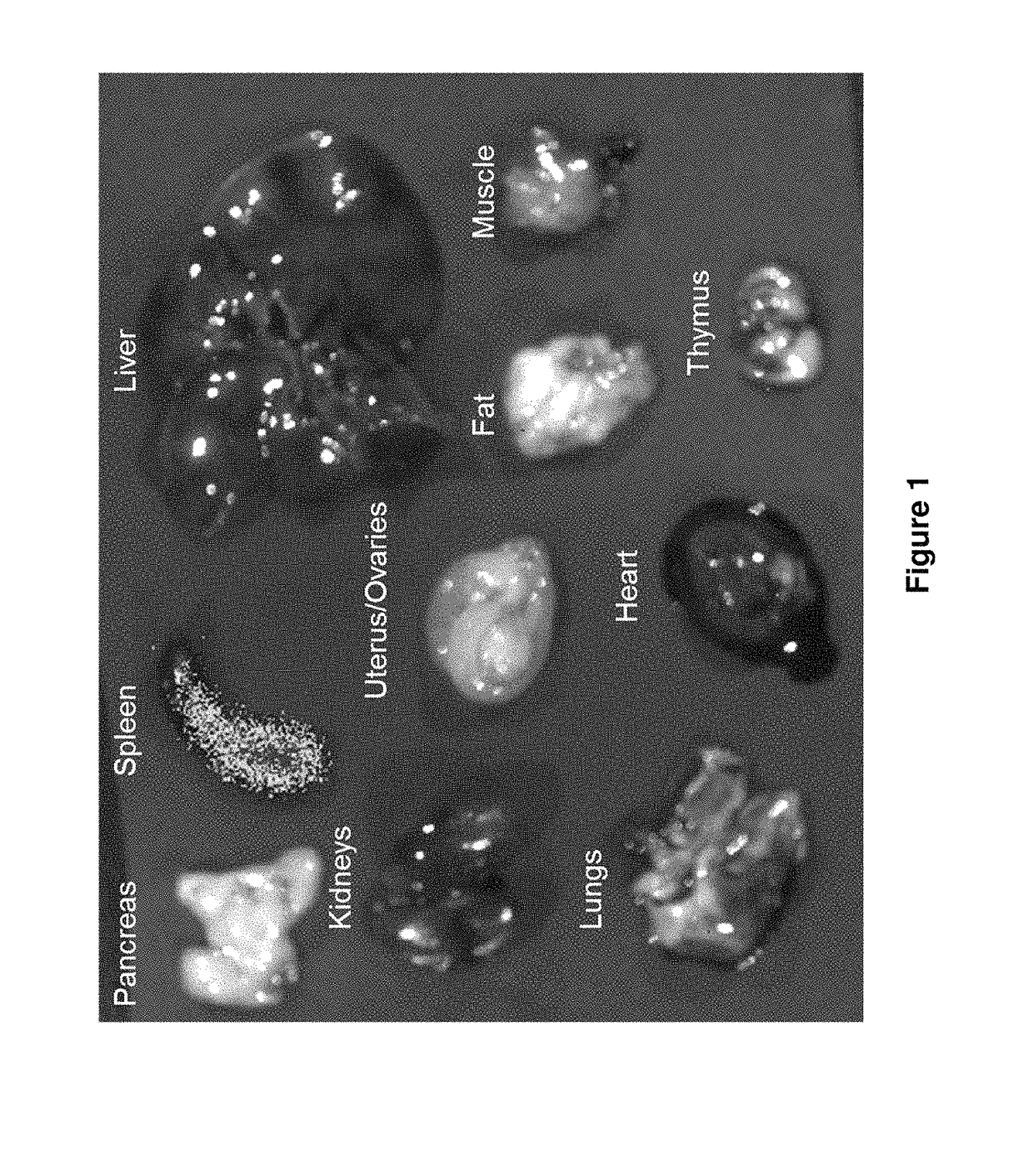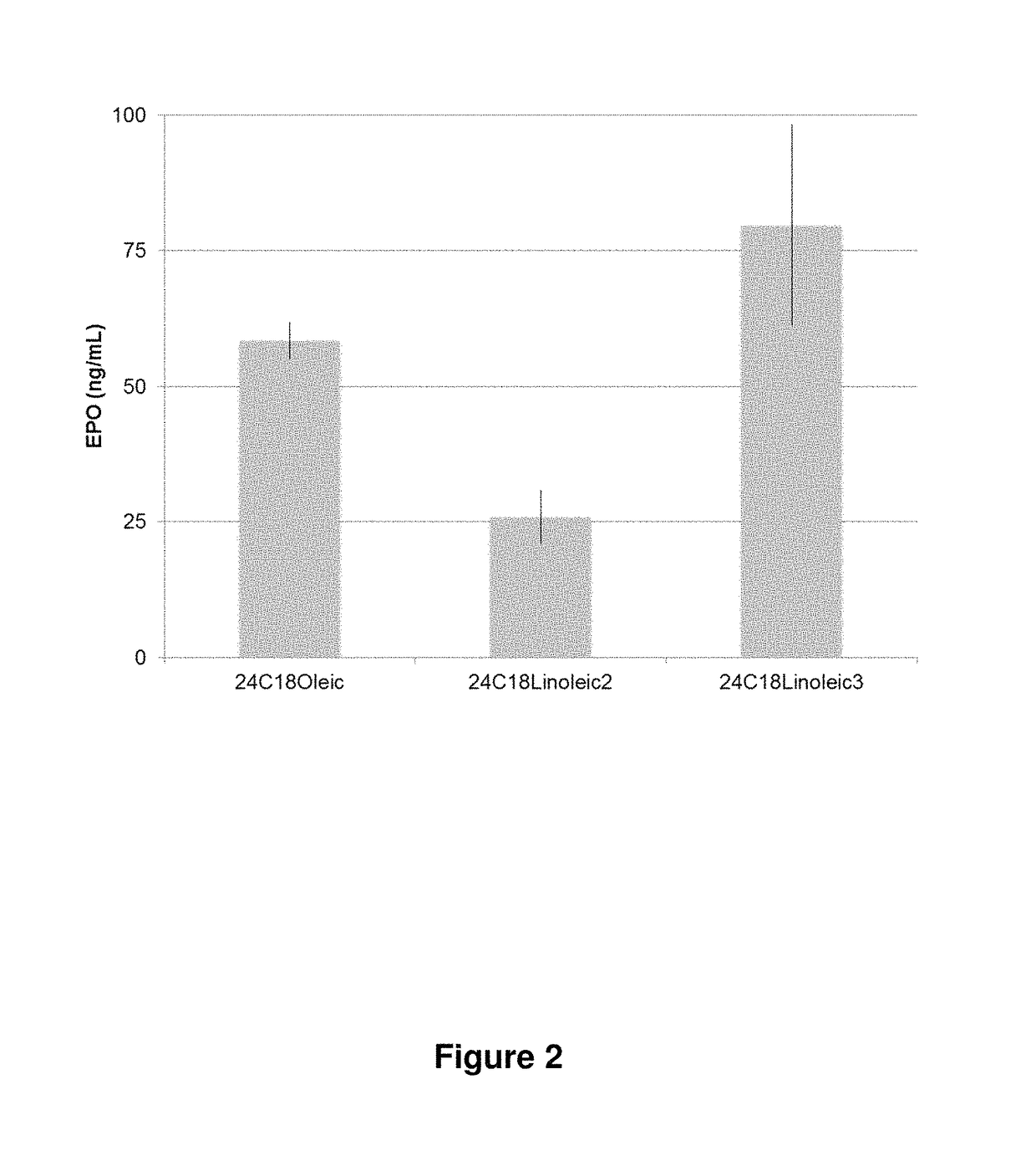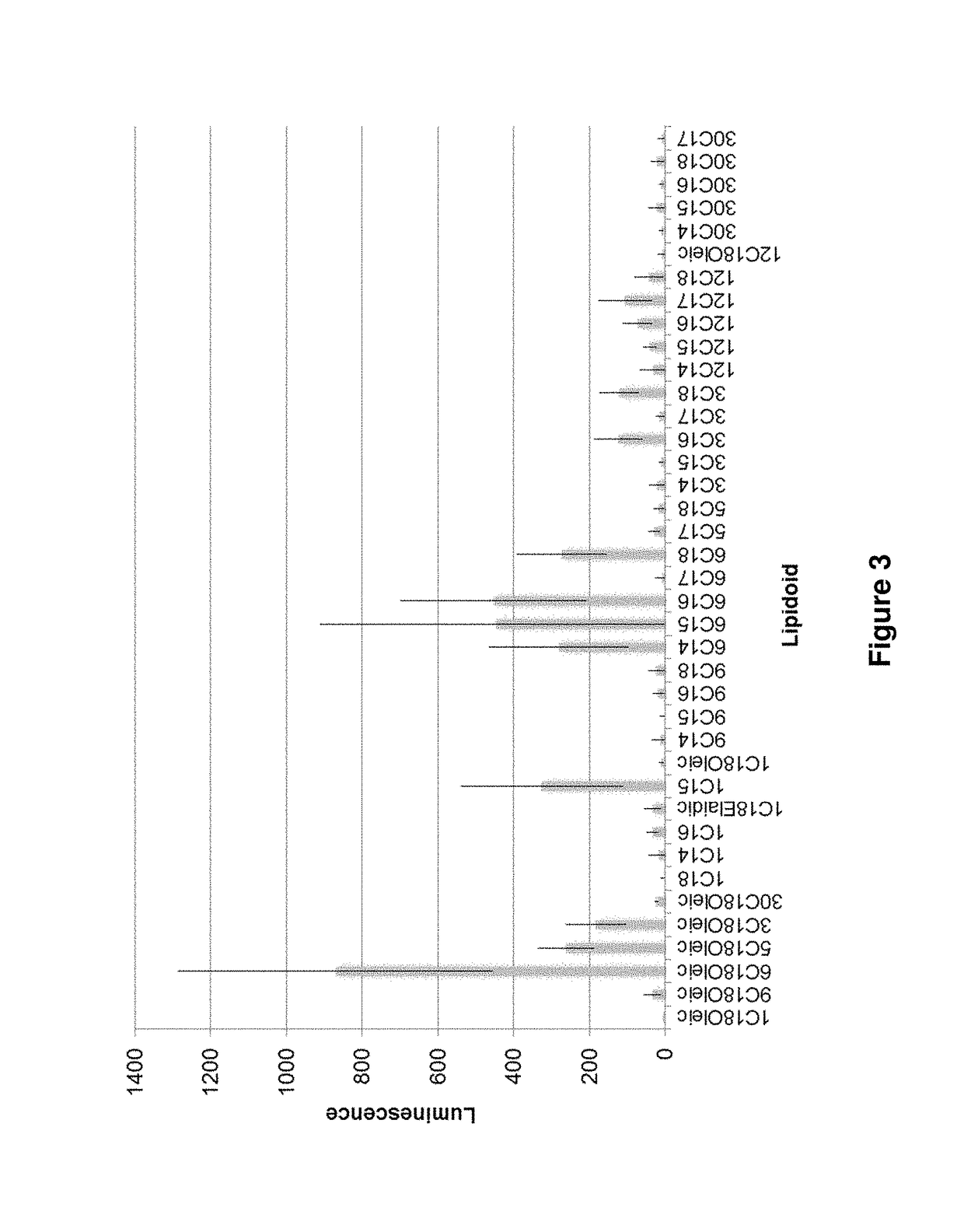Polyamine-fatty acid derived lipidoids and uses thereof
a technology lipidoids, which is applied in the field of polyamine fatty acid derived lipidoids, can solve the problems of slow development of genetic drugs, difficult sirna delivery efficiency, etc., and achieve the effect of low molecular weigh
- Summary
- Abstract
- Description
- Claims
- Application Information
AI Technical Summary
Benefits of technology
Problems solved by technology
Method used
Image
Examples
example 1
on of the Compounds
[0511]The compounds provided herein can be prepared from readily available starting materials using the following general methods (e.g., the method shown in Scheme E1, E2, or E3).
[0512]It will be appreciated that where typical or preferred process conditions (e.g., reaction temperatures, times, mole ratios of reactants, solvents, and pressures) are given, other process conditions can also be used unless otherwise stated. Optimum reaction conditions may vary with the particular reactants or solvents used, but such conditions can be determined by those skilled in the art by routine optimization.
[0513]Proton nuclear magnetic resonance (1H NMR) spectra were recorded with a Varian INOVA-500 spectrometer and are reported in parts per million (ppm) on the δ scale, and are referenced from the residual protium in the NMR solvent (CDCl3: δ 7.26 (CHCl3).
example 1.1
of the Compounds by Esterification
[0514]Compounds described herein (e.g., compounds of Formula (I) or (II)) may be prepared by esterification reactions (see, e.g., Neises et al., Angew. Chem. Int. Ed. 1978, 17, 522), such as the ones illustrated in Scheme 4.
[0515]
[0516]In an exemplary synthesis, an alcohol of Formula (A) or (E) (1 equivalent) was dissolved in a solvent (e.g., dichloromethane, in which the concentration of the alcohol of Formula (A) or (E) was about 0.1 M). To this solution was added a carbodiimide (e.g., EDC (about 2a equivalents, where a is the number of hydroxyl moieties of a molecule of the alcohol of Formula (A)), a catalyst (e.g., HOBt (about 2a equivalents), and a carboxylic acid of Formula (B) or (F) (about 2a equivalents). A base (e.g., triethylamine (about 6a equivalents) was then added dropwise to the resulting mixture. The reaction mixture was stirred at room temperature for about 24 hours. Liquid chromatography / mass spectrometry was used to assess if the...
example 1.2
of the Compounds by Alkylation
[0517]Compounds described herein (e.g., compounds of Formula (I) or (II)) may be prepared by alkylation reactions, such as the ones illustrated in Scheme 5.
[0518]
[0519]In an exemplary synthesis, an amine of Formula (C) or (G) (1 equivalent) was dissolved in a solvent (e.g., DMF). A base (e.g., solid sodium carbonate (about 4b equivalents, where b is the number of amino protons of a molecule of the amine of Formula (C) or (G)) was added, followed by the addition of a compound of Formula (D) or (H) (about 2b equivalents). The resulting mixture was stirred vigorously at elevated temperature (e.g., about 50° C. or higher) for about 48 hours, cooled to room temperature, and filtered. The filtrate was concentrated under reduced pressure. The resulting residue was purified via silica gel chromatography eluted with a 2% to 100% gradient of dichloromethane / ULTRA to yield the desired product.
PUM
| Property | Measurement | Unit |
|---|---|---|
| body weight | aaaaa | aaaaa |
| body weight | aaaaa | aaaaa |
| temperature | aaaaa | aaaaa |
Abstract
Description
Claims
Application Information
 Login to View More
Login to View More - R&D
- Intellectual Property
- Life Sciences
- Materials
- Tech Scout
- Unparalleled Data Quality
- Higher Quality Content
- 60% Fewer Hallucinations
Browse by: Latest US Patents, China's latest patents, Technical Efficacy Thesaurus, Application Domain, Technology Topic, Popular Technical Reports.
© 2025 PatSnap. All rights reserved.Legal|Privacy policy|Modern Slavery Act Transparency Statement|Sitemap|About US| Contact US: help@patsnap.com



